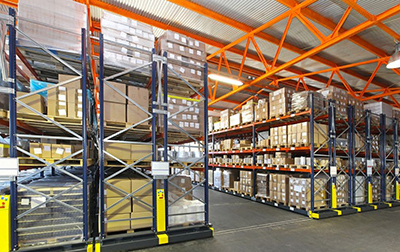
Generally speaking, the construction and operation of RFID smart warehouse management systems are divided into software design and hardware installation:
1. RFID warehouse management system software design
According to actual needs, generally speaking, the design module is divided into the following aspects:
1. Warehouse management
When the goods enter the electromagnetic range of the RFID reader/writer at the warehouse door, the RFID electronic tag will communicate with the reader/writer, transfer the goods information to the warehouse management system, and check the quantity and model of the goods by comparing it with the order. is it right or not. If there is any discrepancy, the system will transmit the data to on-site staff for further comparison.
2. Outbound management
When the goods arrive at the entrance of the warehouse, a fixed reader is used to communicate with the tag, and the RFID electronic tags of the goods leaving the warehouse are collected and sent to the warehouse management system to check whether they correspond to the plan. If there are any errors, they will be repaired manually as soon as possible. deal with. For a small amount of goods, you can use an RFID handheld terminal to collect information from RFID electronic tags (handheld scanner or RFID Bluetooth scanner). When an error occurs, an alarm will be issued. The staff should handle it in a timely manner and finally send the data to The warehouse management system updates the database to complete the shipment.
3. Inventory management
According to the enterprise's inventory needs, existing data (including quantity, type, stacking location, etc.) of goods are retrieved from the warehouse management system, and staff use RFID handheld terminals to scan the goods for inventory (can be completed in one go) and scan the recorded data at the same time. It is transmitted to the backend of the warehouse management system through the wireless network and compared with the original data to find problems.
In addition to the above-mentioned readers and writers that support RFID technology, the warehouse management system software also includes basic information management, system information management, data statistical analysis, etc.
2. RFID warehouse management system hardware deployment
1.RFID reader/writer deployment
RFID warehouse management systems generally require the reader antenna to be installed within the door frame of the warehouse door. Generally, four antennas are installed, and the reader is installed on the wall next to the door. When monitoring goods inside the warehouse, RFID reader antennas need to be placed at the top of different areas, and the RFID readers are also placed together.
2.Selection and placement of RFID electronic tags
As the only label in the warehouse management system, electronic labels must be paid special attention to when affixing them. In order to obtain the best reading and writing results, the polarization of the tag and the reader must be consistent.
At the same time, the material selection of the label must also be correct. For example, anti-metal labels are used to mark metal goods. Non-anti-metal labels are used for goods such as wooden boxes, canvas bags, plastic bags, cartons, etc. At the same time, pay attention to the consistency when pasting the labels and do not paste them randomly.

 简体中文
简体中文
 ENGLISH
ENGLISH
